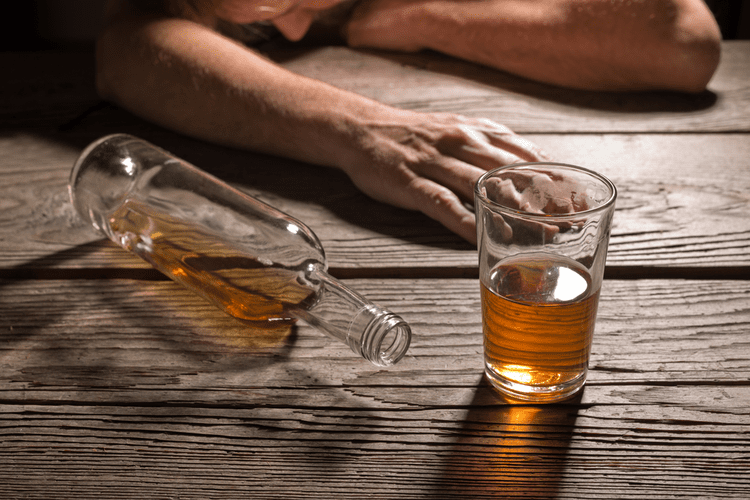The Connection Between Alcohol and Dopamine
Part of the reason why people with an AUD continue to drink, regardless of the personal and social consequences, is the way it affects the brain. Alcohol addiction — the obsession and physical craving to consume alcohol — can partly be explained by the way that alcohol affects dopamine in the brain. Alcohol is one of the most addictive substances on the planet, and for those who develop a dependency, sudden withdrawal can produce physical symptoms in the body such as shaking and delirium. But, while much is known about how alcohol withdrawal affects the body, a recent study delved deeper, and investigated how sudden alcohol withdrawal affects the brain.
Figures
Voltage-sensitive calcium channels are pores in the cell membrane that admit calcium into the neuron in response to changes in electrical currents generated in the neuron.2 Short-term alcohol consumption inhibits calcium flow through these channels. Long-term alcohol exposure results, however, in a compensatory increase in calcium flow, which becomes excessive when alcohol consumption ceases. Evidence suggests that medications that inhibit calcium channel function (i.e., calcium channel blockers such as nimodipine) can relieve the seizures accompanying alcohol withdrawal (Valenzuela and Harris 1997). Certain medications are designed to target dopamine receptors in the brain, helping to reduce cravings and restore balance.
- Consequently, little is known about the neuroplastic alterations that persist after the synaptic proteins that have interacted with alcohol have turned over and been replaced by alcohol-naïve proteins.
- Positive reinforcement is the process by which an action that results in pleasure, or reward, becomes repetitive.
- The human brain uses a number of chemicals – known as neurotransmitters – to carry messages.
- Alcohol may seem like an easy solution to our blues, but we must remember that this mood-boosting effect is short-lived.
- When you consume alcohol, it triggers a surge in dopamine activity, primarily originating in the ventral tegmental area (VTA) and projecting strongly to the nucleus accumbens—a region deeply involved in reward and motivation.
How Does Alcohol Impact Dopamine Levels?
Instead of drinking, you can try exercising, talking to friends, practicing mindfulness, or finding hobbies that make you happy. We are grateful to the Cuzon Carlson and Grant laboratories for their technical assistance and for hosting us while completing these studies. We are also thankful to the members of the Sara Jones laboratory at Wake Forest University and the Laboratory for Integrative Neuroscience at NIAAA for their support and helpful discussions. As a parent of a son that has struggled with drug addiction for over 10 years, Crestview was an answer to my prayer.
Withdrawal Symptoms in Different Genders
- Additionally, previous work has demonstrated that modulation of VTA dopamine cell activity coincides with changes in NAc tonic dopamine levels (Diana et al., 1993; Floresco et al., 2003), as demonstrated in the present study.
- “We measured dopamine once every 100 milliseconds during a sequence of fairly simple decisions,” Kishida said.
- Dopamine levels fall, and the euphoric buzz goes with it, but your brain is looking to regain the feeling caused by the increased level of dopamine.
- In the adult PFC, D2/D4 receptor stimulation increases firing in FSINs (Tseng & O’Donnell, 2007b), resulting in more precise regulation over pyramidal cell networks.
- To examine D2/3 dopamine autoreceptor function, the D2/3 dopamine receptor agonist, quinpirole (30 nM), was bath applied for 30 min and was followed by application of the D2-like dopamine receptor antagonist sulpiride (2 µM) for 15 min.
Alcohol shares this property with most substances of abuse (Di Chiara and Imperato 1988), including nicotine, marijuana, heroin, and cocaine (Pontieri et alcohol and dopamine al. 1995, 1996; Tanda et al. 1997). These observations have stimulated many studies on dopamine’s role in alcohol abuse and dependence, also with the intent of finding new pharmacological approaches to alcoholism treatment. This review summarizes some of the characteristics of dopaminergic signal transmission as well as dopamine’s potential role in alcohol reinforcement.
During this period, it’s crucial for individuals in recovery to be patient with themselves and seek support to manage the physical and emotional challenges they may face. Dopamine levels stay increased in the absence of this specific neurotransmitter as long as the person consumes alcohol. The euphoria that drinking provides the brain can make it impossible for a person to refrain from consuming alcohol.


Furthermore, OSU6162 blunted alcohol‐induced dopamine output in the NAc of alcohol‐naïve rats 196, indicating that OSU6162 has the ability to attenuate the rewarding effects of alcohol. In contrast, a more recent microdialysis study conducted in long‐term drinking rats, showed that OSU6162, compared to vehicle‐pretreatment, had no significant effect on the alcohol‐induced dopamine peak 29. The drug addiction treatment contrasting microdialysis results in alcohol‐drinking versus alcohol‐naïve rats highlight OSU6162´s ability to modulate the dopamine output dependent on the prevailing dopaminergic tone. Furthermore, these results indicate that OSU6162 might have the ability to attenuate alcohol‐mediated behaviours by counteracting the hypo‐dopaminergic state induced by long‐term drinking. It should also be mentioned that these typical antipsychotic agents might have effects on other receptors including dopamine D1, 5HT2 and alpha1 receptors. As reviewed above, the acute reinforcing effects of addictive drugs, including alcohol, could be mediated by increased dopamine release in the NAc, activating dopamine D2 receptors 71, 27, 30.


